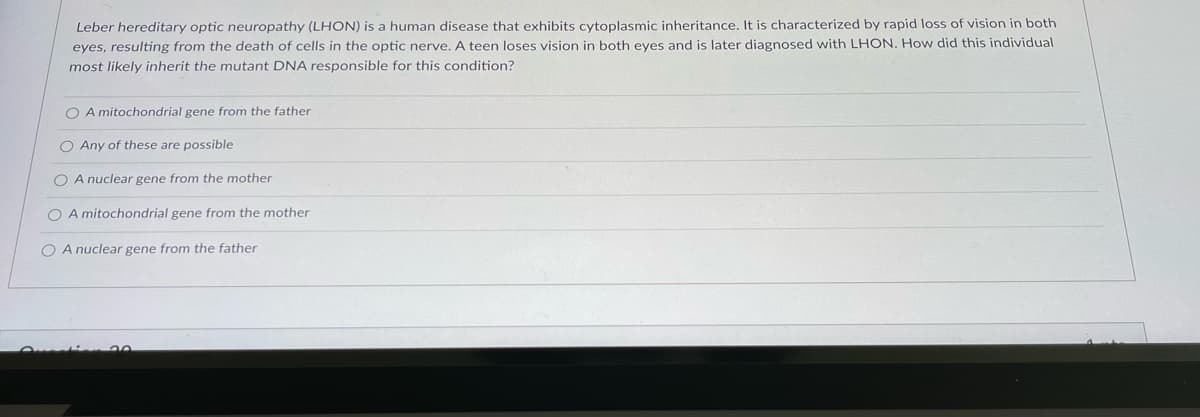Leber hereditary optic neuropathy (LHON) is a human disease that exhibits cytoplasmic inheritance. It is characterized by rapid loss of vision in both eyes, resulting from the death of cells in the optic nerve. A teen loses vision in both eyes and is later diagnosed with LHON. How did this individual most likely inherit the mutant DNA responsible for this condition? O A mitochondrial gene from the father O Any of these are possible O A nuclear gene from the mother O A mitochondrial gene from the mother O A nuclear gene from the father

The disease exhibits a cytoplasmic inheritance pattern.
First option: A mitochondrial gene from the father. It is not possible because during fertilization only the sperm's nucleus enters the ovum, not the cytoplasm. So father cannot contribute to the mitochondria of future generations. Thus any mutations in the father's mitochondrial DNA cannot affect future generations.
Second option: Any of these are possible. It is also not correct as the first option has been ruled out already.
Third and fifth options: A nuclear gene from the mother and a nuclear gene from the father respectively. Since it is given that the disease exhibit cytoplasmic inheritance thus nuclear genes are not involved in it.
Fourth option: A mitochondrial gene from mother. This option satisfies the condition of cytoplasmic inheritance. Mitochondria are present in the cytoplasm and are always inherited from mothers to future generations. This is because the cytoplasm of the zygote is contributed by the ovum only.
Trending now
This is a popular solution!
Step by step
Solved in 2 steps


